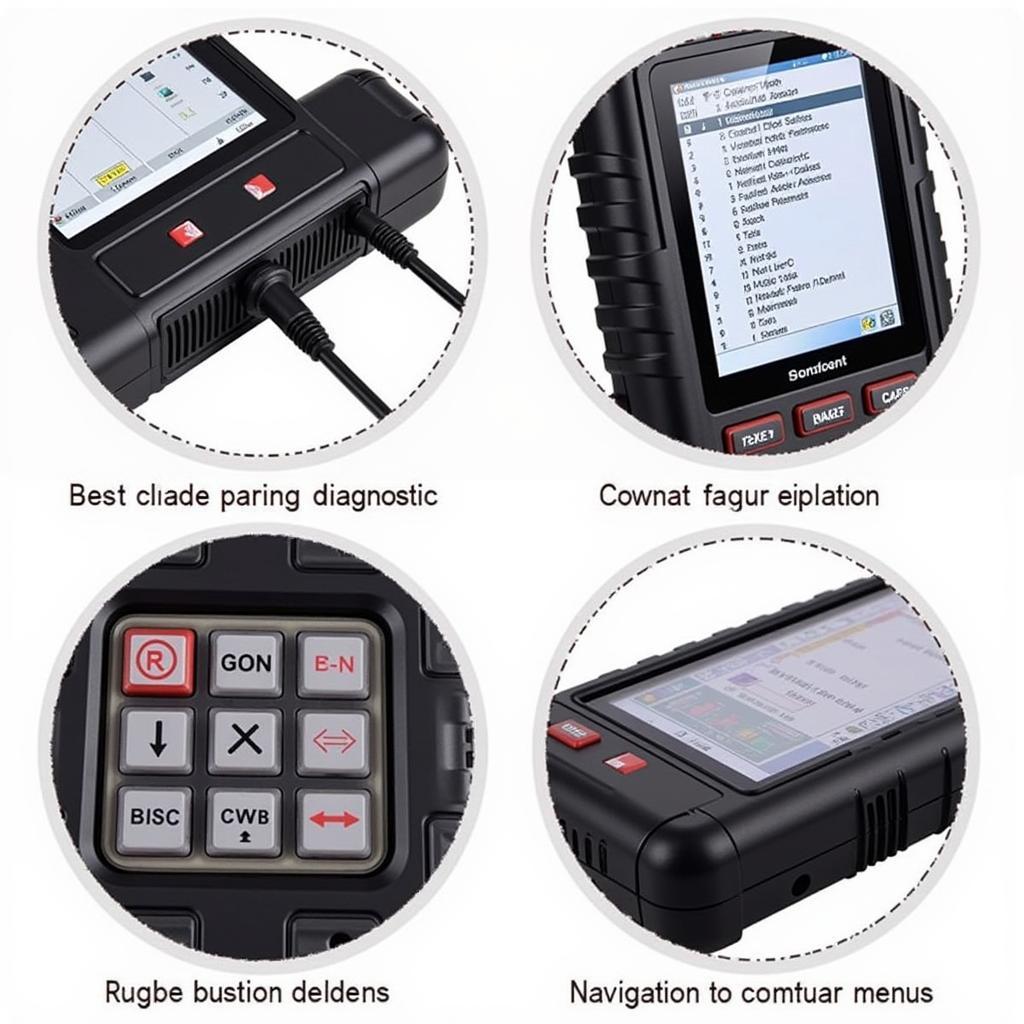A heavy duty truck diagnostic cable is an essential tool for any mechanic or truck owner who wants to diagnose and repair their own vehicle. These cables connect your OTC scan tool to the truck’s electronic control unit (ECU), allowing you to read and clear fault codes, view live data streams, and perform various diagnostic tests. However, with so many different heavy duty truck diagnostic cables available on the market, it can be challenging to know which one is right for you. This comprehensive guide will provide you with all the information you need to make an informed decision.
Understanding the Importance of a Quality Diagnostic Cable
Before we delve into the specifics of heavy duty truck diagnostic cables, it’s crucial to understand why investing in a quality cable is essential.
- Accurate Diagnostics: A reliable cable ensures a stable connection between your scan tool and the truck’s ECU, providing accurate fault codes and live data readings. A faulty cable can lead to misdiagnoses and wasted time and money on unnecessary repairs.
- Efficient Troubleshooting: A high-quality cable with fast data transfer speeds enables your scan tool to communicate efficiently with the ECU, reducing diagnostic time and allowing you to troubleshoot issues quickly.
- Durability and Longevity: Heavy duty truck diagnostic cables are subjected to harsh environments, including extreme temperatures, vibrations, and exposure to fluids. Choosing a durable cable with robust construction and high-quality materials ensures its longevity and reliability.
[image-1|heavy-duty-truck-diagnostic-cable|Heavy Duty Truck Diagnostic Cable in Use|A close-up image of a heavy duty truck diagnostic cable being connected to the diagnostic port of a truck. The image highlights the robust construction of the cable and the secure connection.]
Key Considerations When Choosing a Heavy Duty Truck Diagnostic Cable
Now that we understand the significance of a quality cable, let’s explore the critical factors to consider when choosing one for your OTC scan tool.
1. Compatibility
The first and most crucial factor is compatibility. Ensure the diagnostic cable you choose is compatible with both your OTC scan tool and the make and model of your heavy-duty truck. Check the cable’s documentation or the manufacturer’s website for a compatibility list.
2. Protocol Support
Heavy-duty trucks use various communication protocols, such as J1708, J1939, and CAN bus. Ensure the diagnostic cable supports the protocols used by your truck’s ECU.
[image-2|diagnostic-cable-protocols|Diagnostic Cable Protocol Chart|An infographic depicting the different diagnostic protocols used in heavy duty trucks. The infographic visually represents each protocol’s logo and a brief description of its application.]
3. Cable Length
Consider the length of the cable you need based on the distance between your scan tool and the truck’s diagnostic port. A longer cable provides more flexibility but can also introduce signal loss.
4. Build Quality
As mentioned earlier, durability is paramount. Look for cables with sturdy construction, reinforced connectors, and high-quality insulation to withstand the demanding environment.
5. Additional Features
Some heavy duty truck diagnostic cables come with additional features that can enhance your diagnostic capabilities. These features might include:
- LED Indicators: LEDs on the cable can indicate power status, data transfer activity, or connection issues.
- Surge Protection: Protects your scan tool and truck’s ECU from voltage spikes.
- Waterproof/Dustproof Rating: Ensures the cable’s longevity in harsh weather conditions.
Common Questions About Heavy Duty Truck Diagnostic Cables
Here are answers to some frequently asked questions regarding heavy duty truck diagnostic cables.
Q: Can I use a standard OBD-II cable for my heavy-duty truck?
A: No. Standard OBD-II cables are not compatible with the diagnostic ports and protocols used in heavy-duty trucks.
Q: How often should I replace my diagnostic cable?
A: While there’s no set replacement schedule, inspect your cable regularly for wear and tear. Replace it immediately if you notice any damage or if it starts exhibiting intermittent connection issues.
[image-3|damaged-diagnostic-cable|Damaged Diagnostic Cable| A side-by-side comparison of a new, undamaged heavy duty truck diagnostic cable and a damaged cable with frayed wires and a cracked connector. The image highlights the importance of inspecting cables regularly.]
Q: Can a faulty diagnostic cable damage my truck’s ECU?
A: While rare, a severely damaged cable with exposed wires can potentially cause damage to the ECU. It’s crucial to use high-quality cables and inspect them regularly.
Conclusion
Choosing the right heavy duty truck diagnostic cable for your OTC scan tool is crucial for accurate diagnostics, efficient troubleshooting, and ensuring the longevity of your equipment. By considering the factors discussed in this guide, you can make an informed decision and invest in a cable that meets your specific needs. Remember to always prioritize compatibility, protocol support, build quality, and additional features that enhance your diagnostic capabilities.
If you need assistance choosing the right heavy duty truck diagnostic cable, contact the experts at ScanToolUS at +1 (641) 206-8880 or visit our office at 1615 S Laramie Ave, Cicero, IL 60804, USA. We’re here to help!


Pingback: Unlocking the Secrets: Your Guide to J1708/J1939 Diagnostic Tools - Car Scan Tool
Pingback: Mastering Car Repair with an OTC Diagnostic Scan Tool - Car Scan Tool